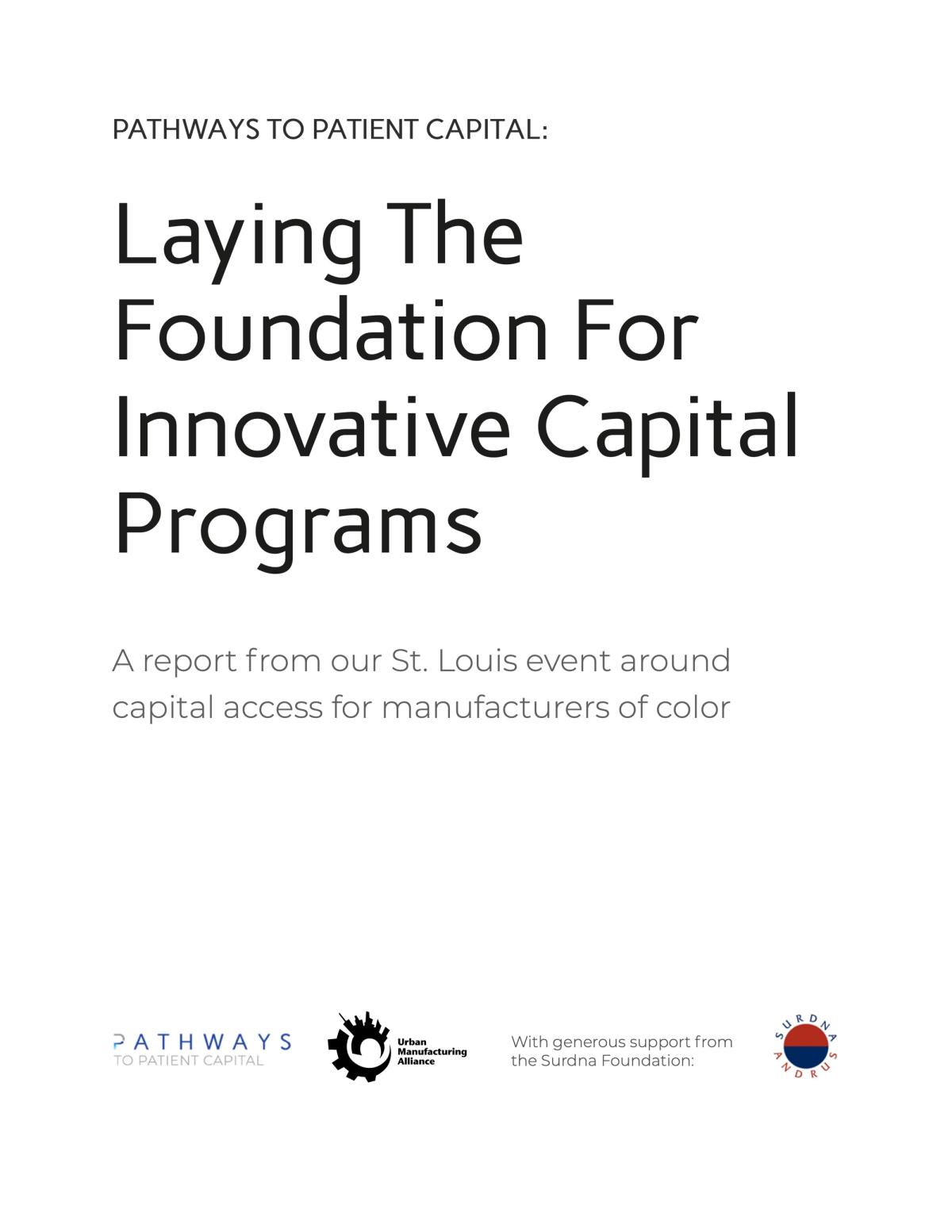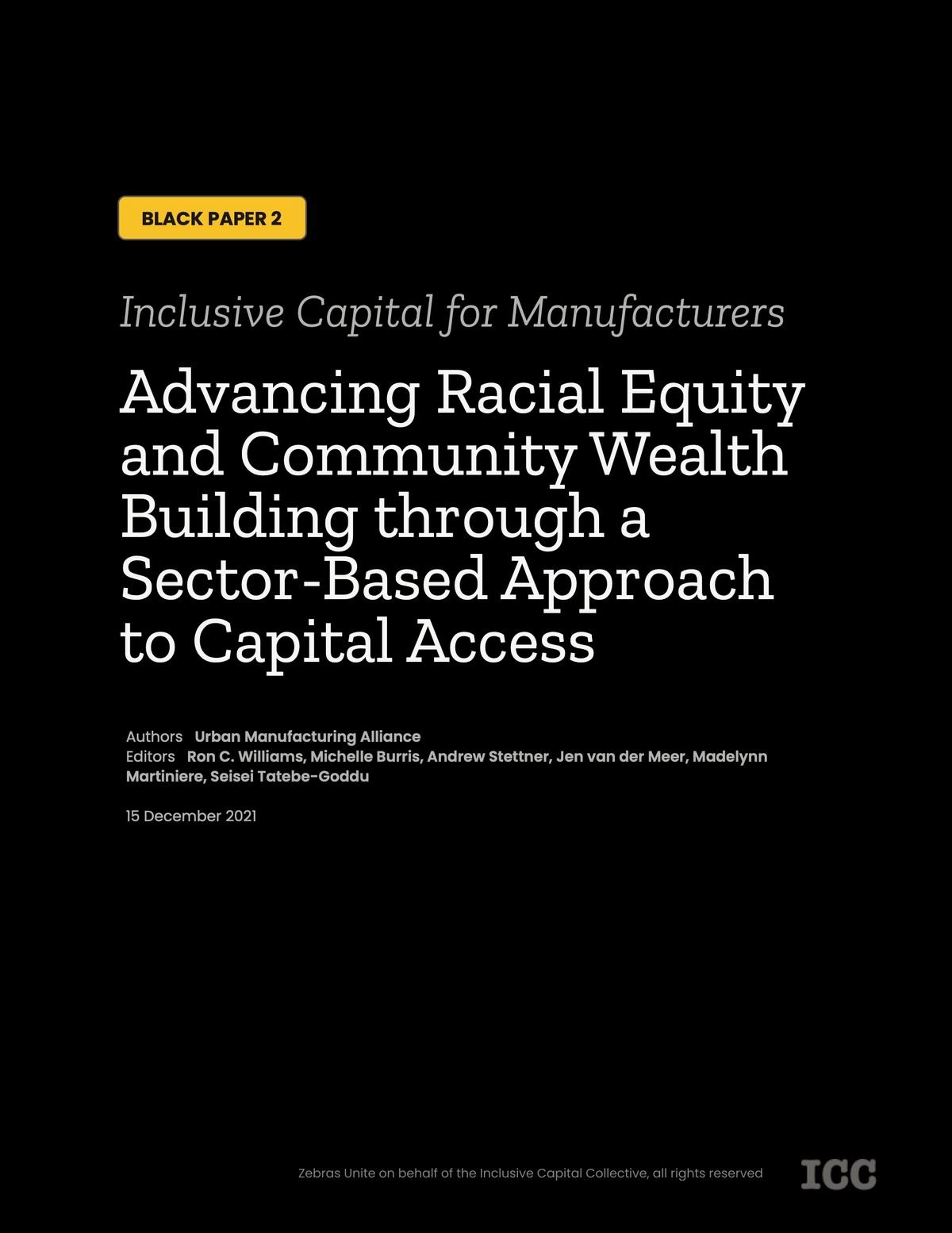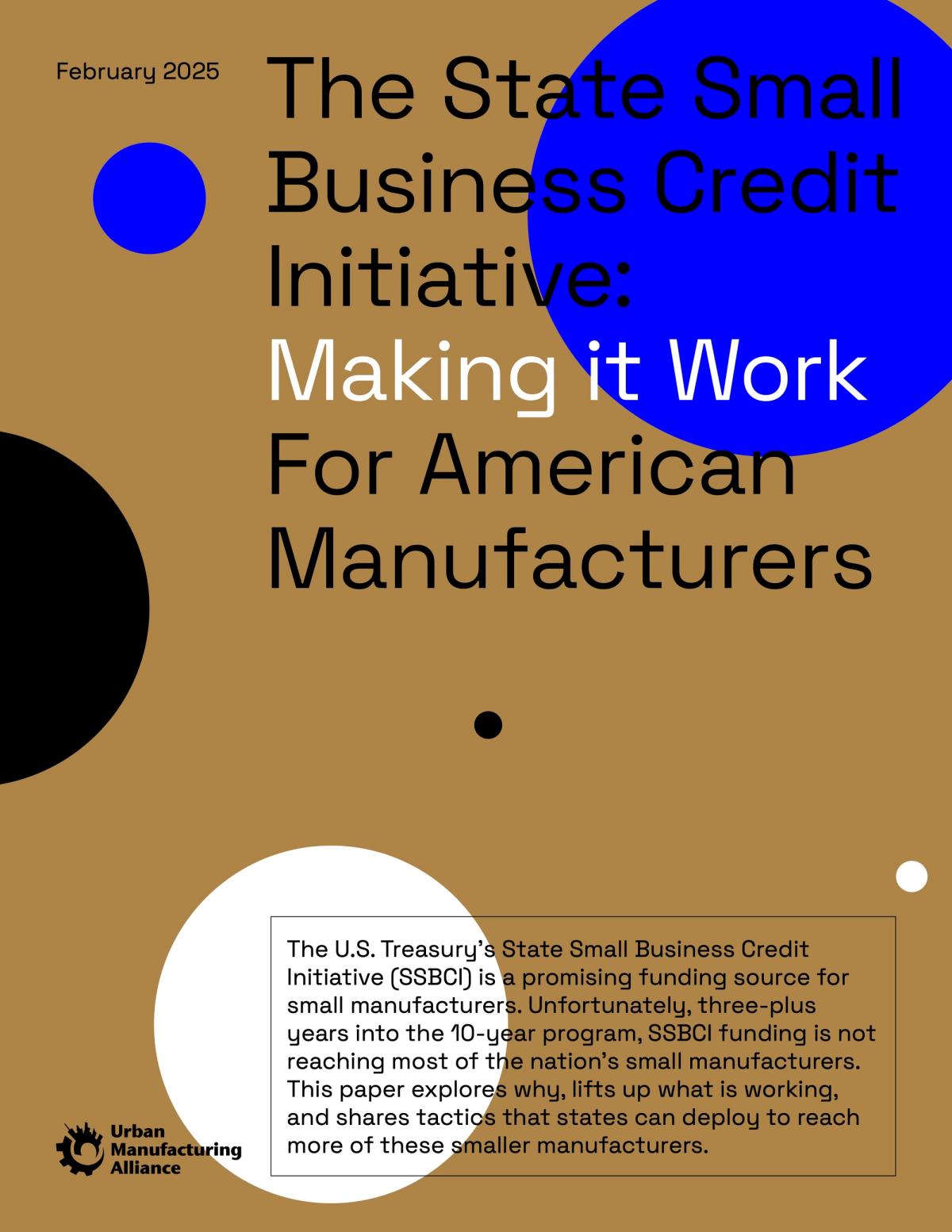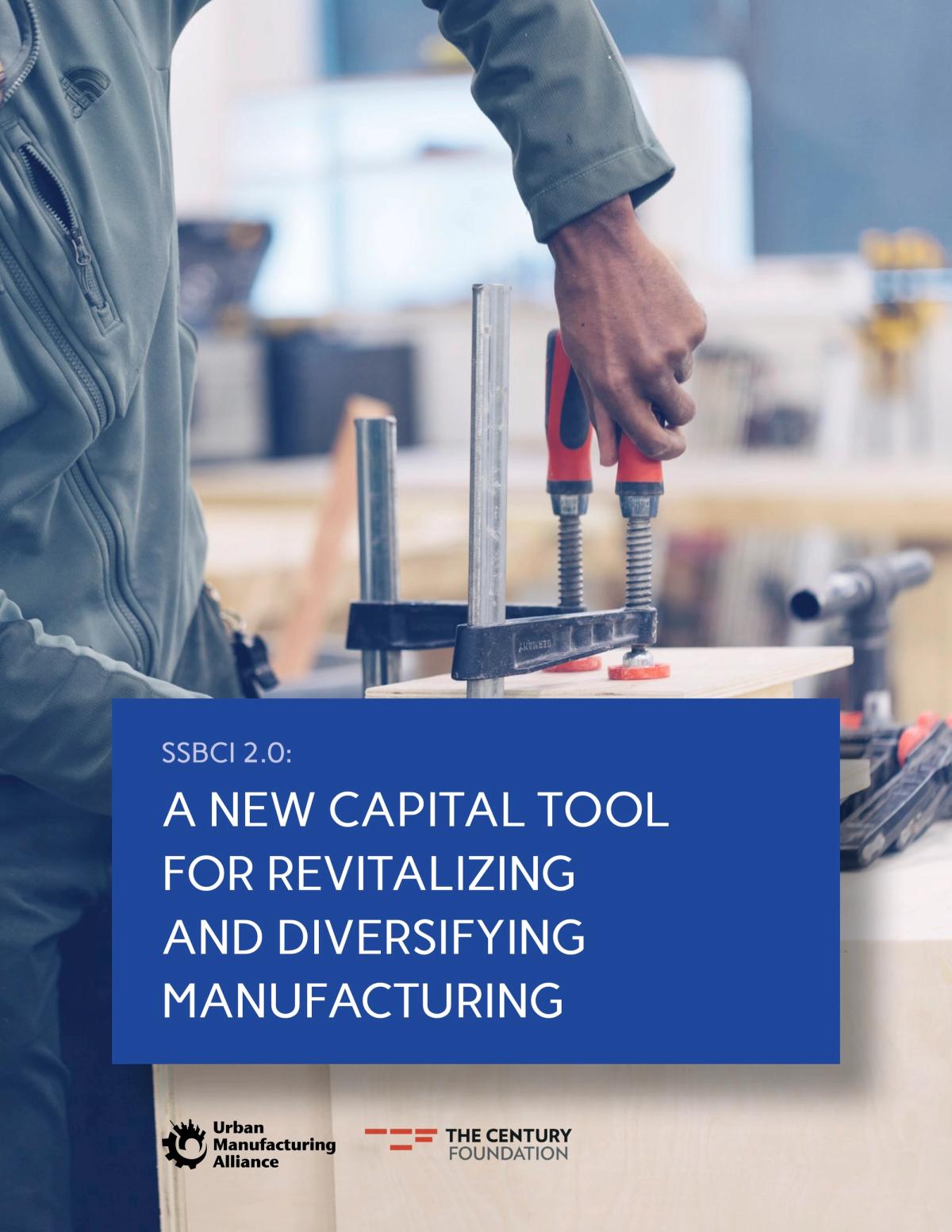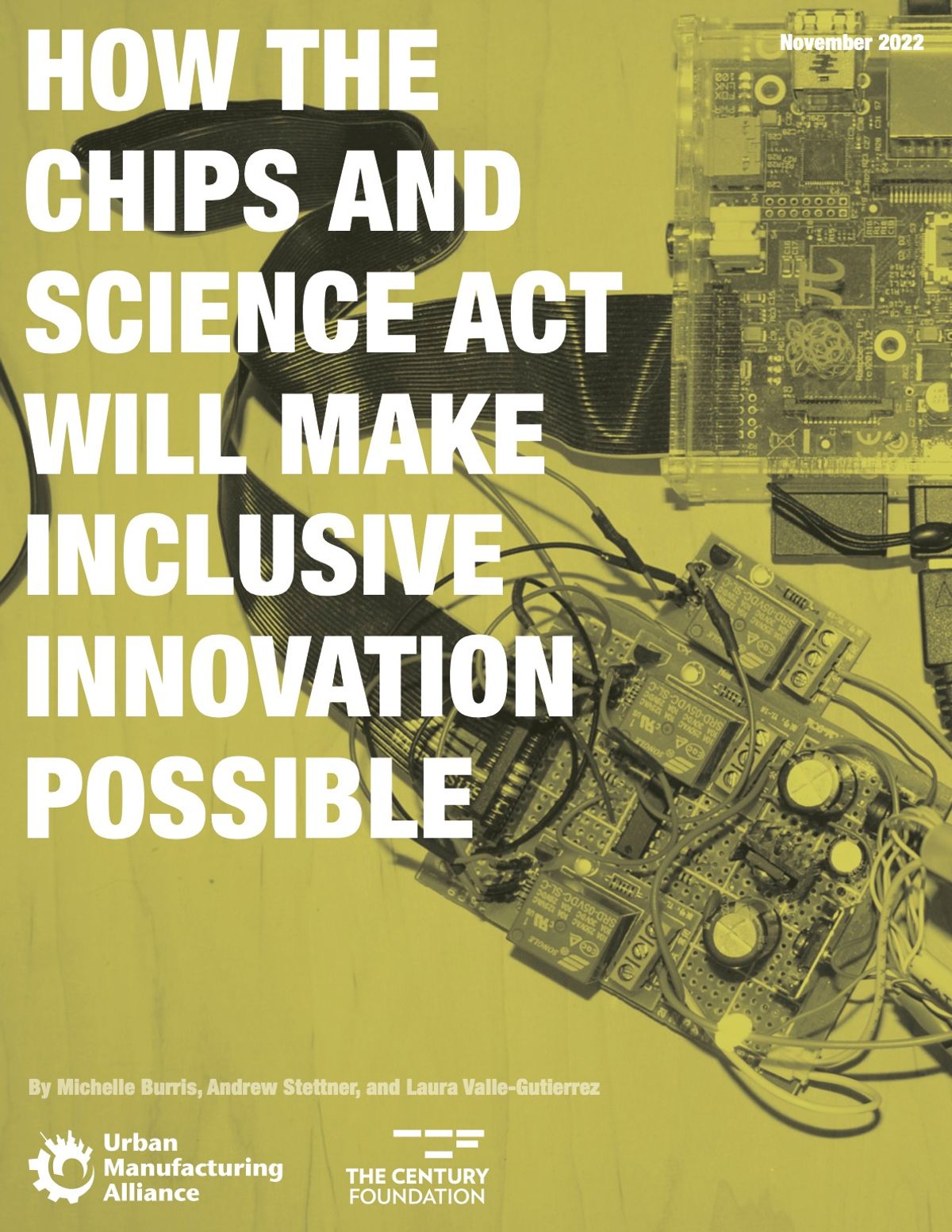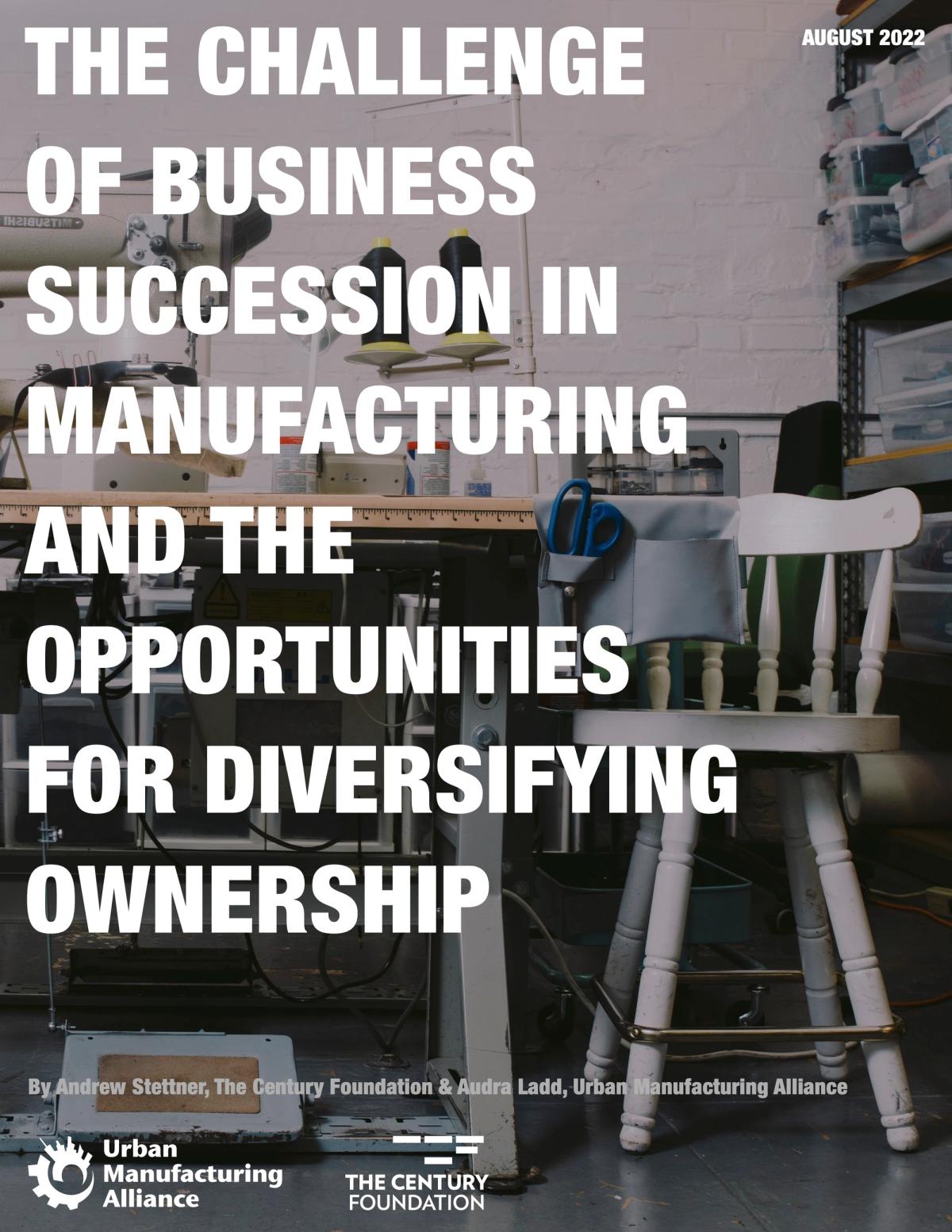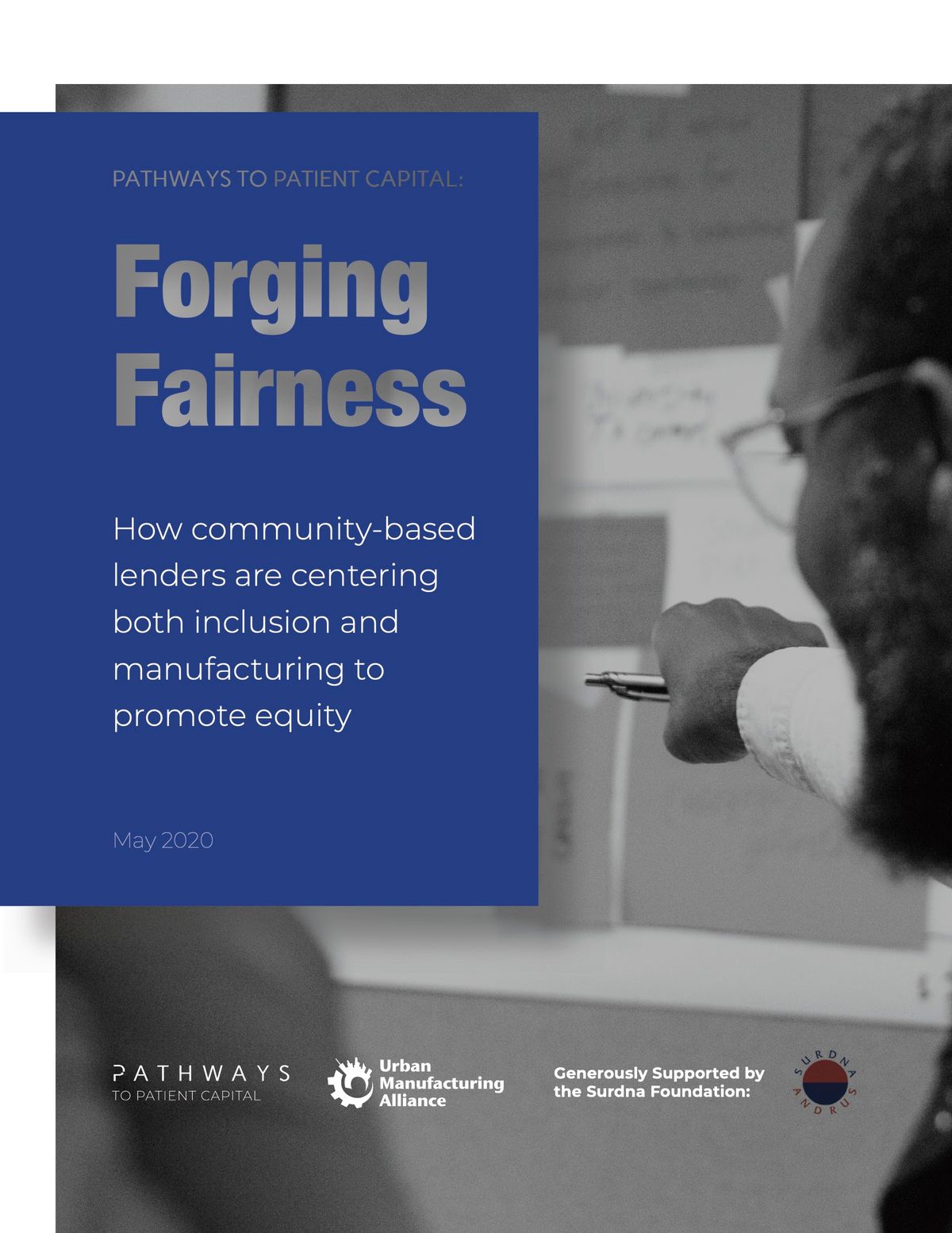
Forging Fairness
How community-based lenders are centering both inclusion and manufacturing to promote equity
May 2020
This report profiles successful or promising approaches to helping entrepreneurs of color—including makers and manufacturers—get access to the capital and know-how they need to realize their business ideas and plans at scale. Anyone working in the field of community level economic development knows that undercapitalization is the chronic condition for most small business owners. But as becomes clear in reading through the profiles—which highlight members of UMA’s current cohort of Pathways to Patient Capital practitioners—these challenges loom even larger for entrepreneurs of color who experience a yawning wealth gap relative to their white counterparts, depriving them of capital to start or grow businesses. We compiled these brief profiles to give readers a sense of both the personal and the practical: one section (“The Practitioner”) describes the people and organizations doing this work and the inspiration that guides them ; the other (“The Practice”) describes the innovations in capital access or readiness that each is pioneering or bringing to scale.










